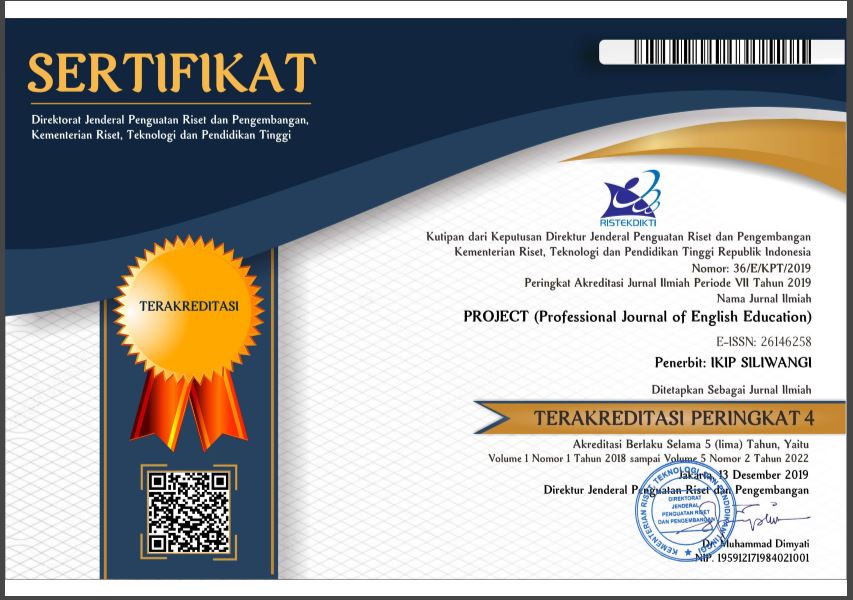TEACHER-STUDENTS CLASSROOM INTERACTION IN TEACHING AND LEARNING ENGLISH
Abstract
This study attempts to expound on the interactions that take place in the classroom between seventh-grade students and English teacher. This study was taken place in SMP Negeri Satu Atap 1 Sawan. A descriptive qualitative study on teacher and student interactions was used in this reasearch. Several data collection procedures were followed in order to analyze the data. To collect the data, the researchers conducted interviews, field notes, and observation. The classroom interactions were observed by the researcher to know the interactions between the teacher and the students (as the participants) in teaching and learning English. The findings demonstrated how the instructor actively engaged the students in the process of learning. Because the students cooperated in joining the lesson and the teacher used a teaching strategy to make the content easier to learn, the activities in the classroom went off without a hitch. The majority of the interactions, it was discovered, were arranged by the teacher. Finding the right teaching strategy and approach is crucial if you want your students to become more confident in their ability to strike up conversations. In addition, the instructor needs to practice effective time management while using a certain teaching strategy.
References
Arora, N. (2017). English Language Teaching Approaches and Methodologies. McGraw Hill Education.
Ary, D., & Jacobs, L. C. (2010). Introduction to Research in Education (8 (ed.)). Cengage Learning.
Astuti, S. P. (2016). Exploring Motivational Strategies. TEFLIN Journal, 27(1), 1–22.
Barone, D. M., & Xu, S. H. (2008). Literacy Instruction for English Language Learners Pre-K-2. Guilford Press.
Bureković, M., Rizvić-Eminović, E., & Pilav, M. (2023). Review of five methods used in english language teaching. Zbornik Radova Islamskog Pedagoškog Fakulteta u Zenici (Online), 21, 447–464. https://doi.org/10.51728/issn.2637-1480.2023.447
Harsono, Y. M. (2017). Designing and Developing Appropriate EFL Learning Materials Reflecting New Contexts and Goals. Proceedings of the Fifth International Seminar on English Language and Teaching (ISELT-5), 350–354.
Huriyah, S., & Agustiani, M. (2018). An Analysis of English Teacher and Learner Talk in the Classroom Interaction. Linguistic, English Education and Art (LEEA) Journal, 2(1), 60–71. https://doi.org/https://doi.org/10.31539/leea.v2i1.385
Kern, R. (2023). Technology and language learning. The Routledge Handbook of Applied Linguistics, 1(3), 55–67. https://doi.org/10.4324/9781003082644-6
Nurlaily, & Sally. (2020). Qualitative Study: Teacher-Student Interactions In A Junior High School Classroom In Batam City. Professional Journal of English Education (PROJECT), 3(5), 546–552. https://doi.org/https://doi.org/10.22460/project.v3i5
Richard, K. (2003). Qualitative Inquiry in TESOL. Aston University. https://doi.org/https://doi.org/10.1057/9780230505056
Sagita, I. (2018). Teacher Talk and Learner Talk in The Classroom Interaction (An Interaction Analysis to an English Language Class at SMP N 2 Sindang). Wiralodra English Journal, 2(1), 98–106. https://doi.org/https://doi.org/10.31943/wej.v2i1.27
Sundari, H., Rafli, Z., & Ridwan, S. (2017). Interaction Patterns in English As Foreign Language Classroom At Lower Secondary Schools. Journal of English Education, 6(1), 99. https://doi.org/https://doi.org/10.25134/erjee.v6i1.775
Suryati, N. (2015). Classroom Interaction Strategies Employed By English Teachers At Lower Secondary Schools. TEFLIN Journal, 26(2), 247. https://doi.org/https://doi.org/10.15639/teflinjournal.v26i2/247-264
Tsui, A. B. M. (2008). Classroom Discourse: Approaches and Perspectives. In N. H. Hornberger (Ed.), Encyclopedia of Language and Education (pp. 2013–2024). Springer US. https://doi.org/10.1007/978-0-387-30424-3_154
Downloads
Published
Issue
Section
License

This work is licensed under a Creative Commons Attribution-ShareAlike 4.0 International License.




